Contents
One look at Dubrovnik and it’s no surprise that this enchanting medieval city has been dubbed, “The Pearl of the Adriatic.” But beyond being such a mesmerizing destination on its own, Dubrovnik’s coveted address puts it at the doorstep of some of the other dreamy and fascinating destinations in Croatia and nearby Montenegro and Bosnia Herzegovina.

From wooded islands to sleepy villages, calm beaches, and time-worn churches, the areas surrounding Dubrovnik are waiting to be discovered. I spent much of my journey throughout Croatia exploring many of these spots. With a fantastic highway system and seamless border crossings between neighboring countries, it could not be easier to venture off from Dubrovnik and see what else this beautiful region has to offer.
Sailing trips are a popular way to explore the beautiful islands along the coast. Dubrovnik is also just a short drive away from the country of Montenegro, where you can soak up the beauty of its tiny villages and hike amid pine-covered mountain peaks. And for history and culture, Mostar, in Bosnia Herzegovina, outshines its battle-scarred past with friendly locals and a pretty old town on the banks of the Neretva River.
Learn more about the best places to visit with my list of the top day trips from Dubrovnik.
1. Mostar
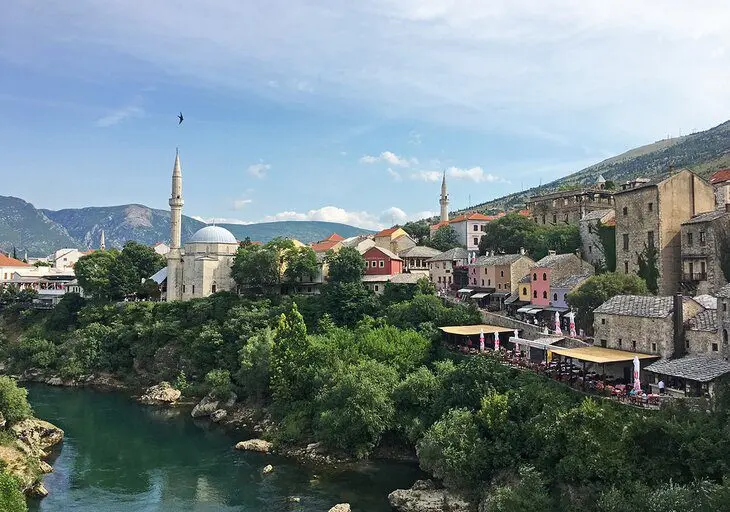
Still showing some scars from its turbulent past, the UNESCO World Heritage-listed city of Mostar is a cultural crossroads with a fascinating history. It lies about 130 kilometers from Dubrovnik in Bosnia-Herzegovina.
The fairy-tale city has two aesthetics: Ottoman and Venetian. Sliced by the Neretva River, the eastern bank is the atmospheric Muslim part of town, while the western bank is where Catholic Croats call home.
The charming old town is a tangle of cobbled streets that leads to the river, where the historic Old Bridge is one of the most beautiful landmarks in the city. Local residents will often jump off the bridge performance-style (for a tourist donation fee, of course).
Other highlights include the old town’s historic buildings; the Mosque of Mostar; and the Old Bazaar, where you can shop for local crafts and sip Turkish coffee.
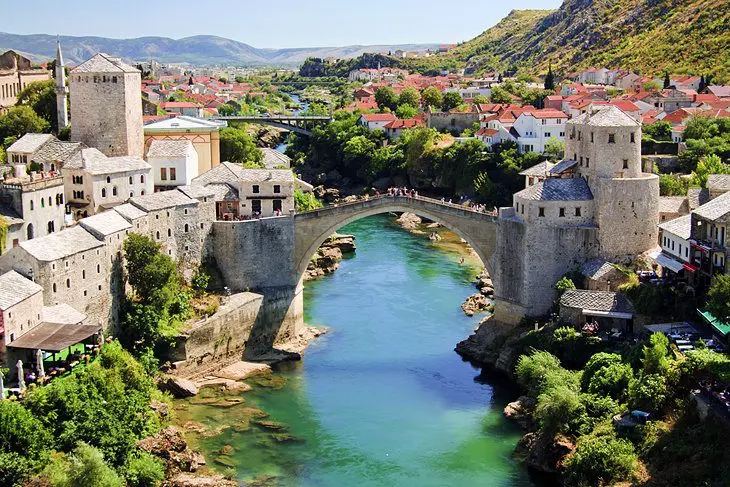
About 25 kilometers from Mostar, the town of Međugorje is a popular stop for Catholic pilgrims. Most people come here to visit Apparition Hill, the site where six local children first claimed to see a vision of the Blessed Virgin Mary on June 24, 1981. Since this date, these same six people, now adults, have reported many more sightings, and others claim to have witnessed supernatural phenomena.
You can visit both Mostar and Međugorje on the Bosnia and Herzegovina Day Trip , which also includes a stop in Bosnia’s seaside town of Neum and the UNESCO-listed town of Počitelj. In Mostar, you can stroll the cobbled streets and see the picturesque Old Bridge before heading back to Dubrovnik.
Spend even more time in this beautiful Balkan city on the Mostar Full-Day Excursion from Dubrovnik . Enjoy a guided walking tour of the old town, including Stari Most and the Mosque of Mostar, and see the tumultuous Kravice Waterfalls (formerly called Kravica Waterfall), where you can take a summertime dip in the pools when the water levels are low. Transport in a luxury Mercedes van, with hotel or port pickup and drop-off is included.
2. Kravice Waterfalls

Want to escape the heat of the city during the warmer months? Kravice Waterfalls (formerly called Kravica Waterfalls) offer a refreshing getaway into a world of lush greenery and cool rushing water plunging into an emerald-hued pool.
About a 2.5-hour drive from Dubrovnik and 40 kilometers from Mostar, in Bosnia-Herzegovina, the falls are often included as a stop on day trips to Mostar, but they are worthy of a trip on their own – especially if it’s a hot summer day.
The cascades resemble a mini Niagara Falls. Tucked amid a lush forest of poplars and fig trees, the Trebižat River tumbles over 25-meter-high moss-covered limestone cliffs, creating about 20 misty veils of water. You can swim in the pool at the base of the falls, and if the water’s a little chilly, you can hire kayaks to paddle along the river farther downstream. Bring a picnic to enjoy along the shore, or purchase snacks and refreshments at the cafés.
To see the falls at their fullest, the best time to visit is in the spring and early summer. Springtime is also when the surrounding forest is a lush green, providing beautiful photo ops.
Open from May through October, the falls lie about a 15-minute walk from the parking lot down a well-sign-posted dirt track, and you need to pay a fee to enter.
3. Montenegro
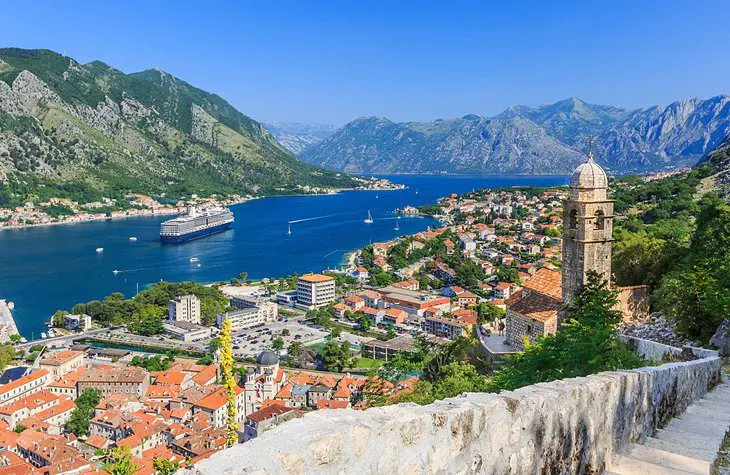
The border of Montenegro is less than a two-hour drive from Dubrovnik. It was a last-minute decision to tack Montenegro on to the end of my Croatia trip, but once I arrived I knew that it is a country worthy of much more than just a day trip.
Still, if a day trip is all you have time for, Montenegro is a must. The tiny country is supremely magical, and you will feel that the moment you cross the border and begin the drive around the majestic Boka Bay. The road around this fjord-like bay takes roughly an hour to complete and along the way, you’ll pass charming villages surrounded by towering limestone mountains.
At the southeastern corner of the bay is the Old Town of Kotor, a pocket-sized medieval city with centuries of history, gorgeous architecture, and spectacular natural scenery. Along the coast of Montenegro, mountains plunge to the Adriatic Sea, where white pebbly beaches set the scene for lazy afternoons splashing in the crystal clear water.
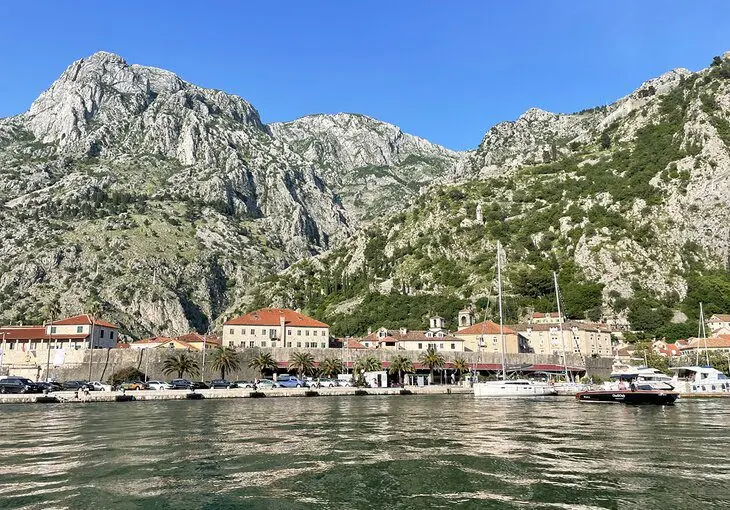
Straddling the border between east and west, Montenegro showcases its rich history in its charming villages and towns. Top things to see and do in Montenegro include the World Heritage-listed walled city of Kotor, with St. John’s Fortress, and the charming village of Perast.
Montenegro day trips can also include other highlights, including the walled medieval beach town of Budva; beautiful Kotor Bay (Boka Bay), Europe’s most southern fjord; the Tara River Canyon; Skadar Lake; and Durmitor, a national park where outdoor adventures include hiking, biking, swimming, skiing, and rafting.
To see the top attractions of this petite nation in a day, the Full-Day Trip from Dubrovnik to Montenegro is a great option. Budva, Perast, and a walking tour of Kotor are just some of the highlights of this tour, which includes an expert guide, transportation in an air-conditioned vehicle, entrance fees, and hotel pickup and drop-off.
Accommodation: Top-Rated Beaches Resorts in Montenegro
4. The Elafiti Islands

If you’re a fan of sailing and island-hopping, the beautiful Elafiti Islands are only a short boat ride from Gruž, the port area of Dubrovnik. The archipelago consists of 13 islands, but only three are inhabited, and they make a lovely day trip with their quaint villages and peaceful beaches. A great way to explore them is on a sailing trip from Dubrovnik.
Koločep is usually the first stop and perhaps the most popular of the islands, where the scent of pines from centuries-old forests mingles with lemon and orange blossoms. You can bask on the beaches, which are a mix of sand and pebbles; explore a sea cave; and admire the summer homes.
Other Koločep tourist attractions include the ruins of a basilica and the Chapel of St. Anton, with a 15th-century polyptych of Ivan Ugrinovic, one of the most famous works among all the Dubrovnik artists.
Šipan is the largest island in the archipelago and is known for its tranquil bays and beaches, as well as its old houses and churches.
Lopud is car-free and a little more geared toward tourism. Highlights here include the ruins of fortresses; summer homes; medieval churches; and a 15th-century Franciscan monastery, with a church full of priceless art.
Another popular stop is sandy Šunj beach, a 30-minute walk from Lopud’s port.
5. Mljet National Park
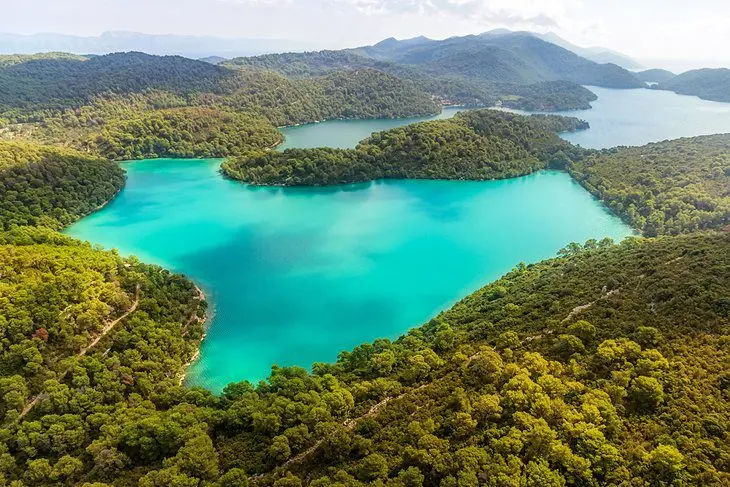
Easily reached from Dubrovnik by catamaran, the thickly wooded island of Mljet is a haven for hikers and nature lovers.
The western third of the island is home to pine-covered Mljet National Park, with two interconnected turquoise saltwater lakes as its focal points: Veliko Jezero and Malo Jezero (“Big Lake” and “Small Lake”). One of the lakes even has its own tiny island – St. Mary – with an 800-year-old Benedictine monastery, which you can explore on a boat tour.
Favorite things to do on the island include swimming in the cool waters, kayaking, mountain biking, and hiking the nine-kilometer trail along the edge of the lakes or up the hills for panoramic island views.
The catamaran trip to Polače, within Mljet National Park, only operates in summer and usually takes about one hour and 50 minutes. But you can also access the island by taking a one-hour catamaran or ferry trip to the town of Sobra.
8. The Peljesac Peninsula
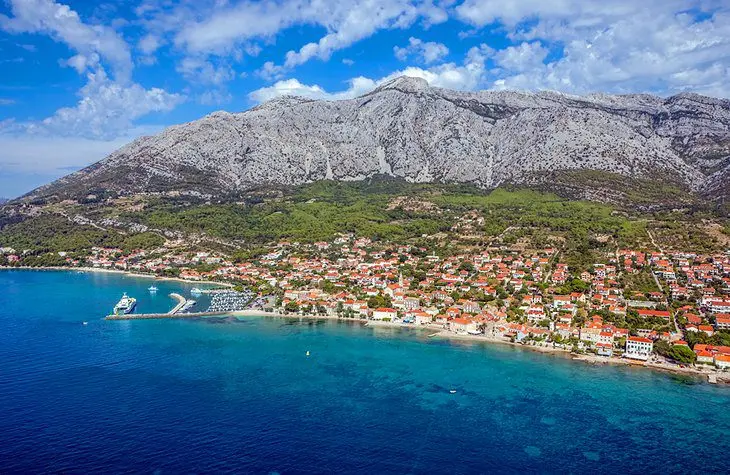
About a 60- to 90-minute drive from Dubrovnik, opposite the island of Korčula, the Peljesac Peninsula is Dalmatia’s largest peninsula and a fun place to visit on a day trip – especially for foodies.
The sparsely populated peninsula is a patchwork of farms, grapevines, fig, almond, and lemon trees, and the little town of Ston is famous for its seafood.
Wildflowers and groves of pine and cypress surround the sleepy villages, and you’ll also find some Blue Flag beaches along the peninsula, rated highly thanks to their safe swimming areas.
The main settlement is Orebić, one of Croatia’s warmest spots thanks to Mt. Ilija, which shelters the town from northerly winds. Popular things to do here are visiting Our Lady of the Angels, a historic monastery; the four-hour hike up Mt. Ilija; and sunbathing and swimming at the beaches.
Boats often depart from Orebić to the island of Korčula, so you could combine these two destinations into one day trip.
7. The Island of Lokrum
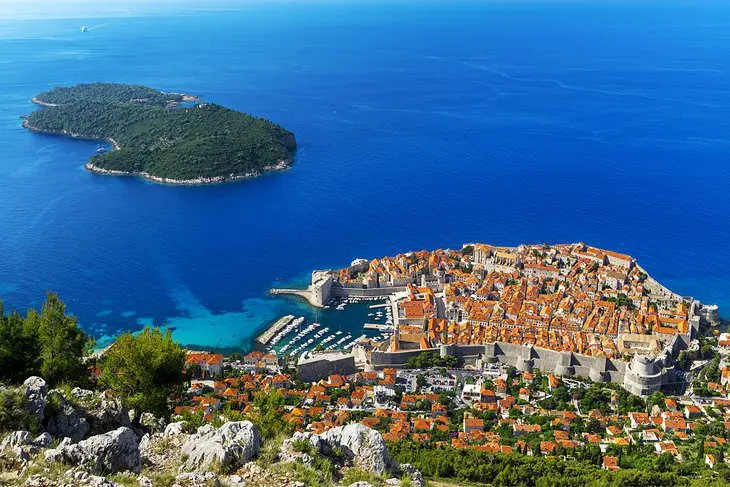
Just 600 meters from the shores of Dubrovnik is the pretty little pine-covered island of Lokrum. It’s a popular day trip for those visiting this beautiful part of the Dalmatian coast.
Easily accessed by a short ferry ride from the port in Dubrovnik’s Old Town, the island is home to an old monastery, walking trails, and gardens.
Perched 96 meters atop the island’s tallest peak, the French Fort Royal Castle is fun to explore and offers superb views over the Adriatic and Dubrovnik.
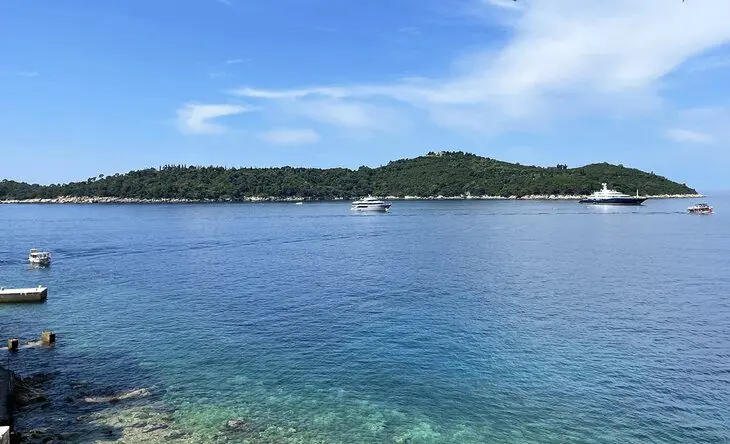
Also worth the journey is the lovely Lokrum Botanical Garden, notable for its collection of both native and imported plants (keep an eye out for its resident peacocks).
Bring your swimsuit if you want to sunbathe or take a dip in the small lake Mrtvo More, which means “Dead Sea,” and remember to ask the locals about the island’s legendary curse.
Lokrum is one of the most popular boat trips from Dubrovnik.
8. Cavtat
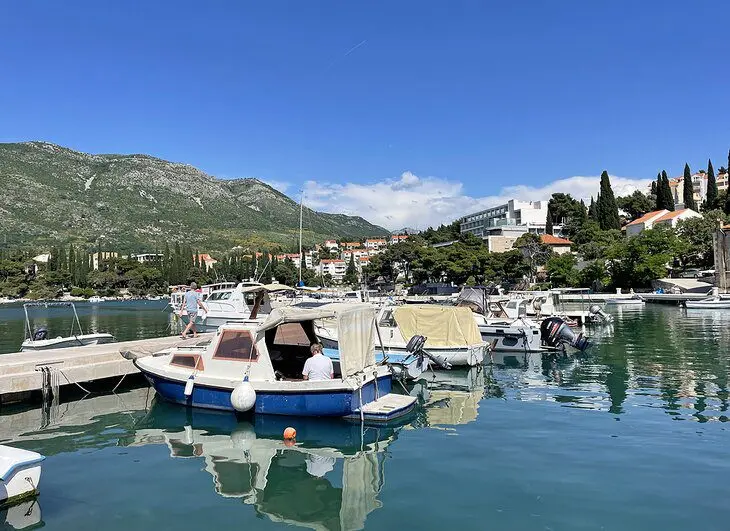
Only 30 minutes from Dubrovnik by car, Cavtat snuggles between a mountain range and a picturesque harbor. Think of Cavtat as “Dubrovnik light.” It boasts the same lovely white stone and red roof aesthetic, with a turquoise slice of the sea in front of it, plus a picturesque harbor. But unlike Dubrovnik, it is not overwhelmed with tourists and can be a lovely, quiet spot to sit and relax.
A great spot to begin sightseeing around Cavtat is the charming old town, with its narrow cobbled streets and old stone buildings capped with red-tiled roofs. One of the town’s most famous residents was the artist Vlaho Bukovac (1855-1922), and you can tour his former home and see his paintings adorning the town.

Other worthwhile places to visit in Cavtat include the Rector’s Palace (Knezev Dvor) and the Racic Mausoleum, in the town’s cemetery, designed by Ivan Mestrovic, a Croatian sculptor.
Thanks to the town’s beautiful setting, outdoor adventures are also popular and include swimming and sunbathing at the pebbly beaches, stand-up paddleboarding, kayaking, and biking.
Cavtat is also serviced by local buses and water taxis from Dubrovnik.
9. Korčula
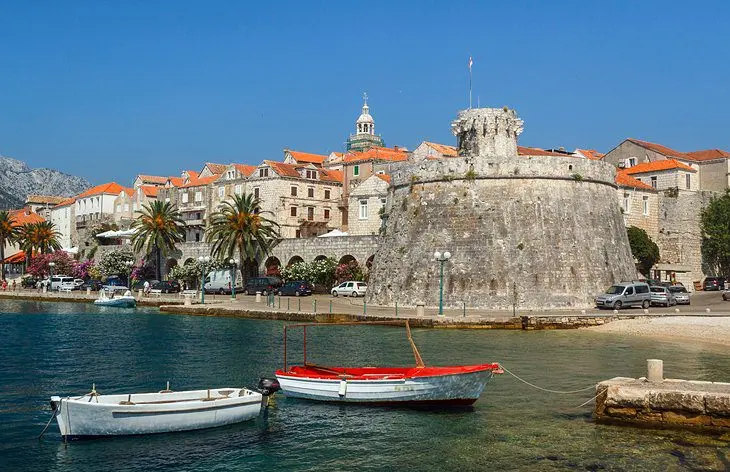
Famous as the birthplace of explorer Marco Polo, Korčula is a medieval walled town on a beautiful island of the same name. It’s often described as a mini Dubrovnik, thanks to its beautiful but compact old town.
You can access Korčula from the city on a 2.5-hour catamaran (in season). Alternatively, you can travel to the town of Orebić, less than two hours from Dubrovnik on the Peljesac Peninsula, and take a 20-minute ferry ride to the island.
The narrow car-free streets of the Old City of Korčula are a delight to wander, and you can see the house where Marco Polo reputedly once lived, as well as the Venetian-inspired St. Mark’s Cathedral, with its distinctive bell tower. Once part of the mighty Venetian empire, the town still reflects this heritage in its graceful architecture.
Other highlights of a visit to the island include the calm bays, which are a mix of pebbles and sand but are lovely for a cool dip; the sleepy little villages; and the picturesque countryside cloaked in grapevines, olive trees, and pines.
Korčula is also known for the moreška sword dance, a traditional dance performed for tourists on summer evenings just outside the town walls.
Accommodation: Where to Stay in Korčula
10. Split
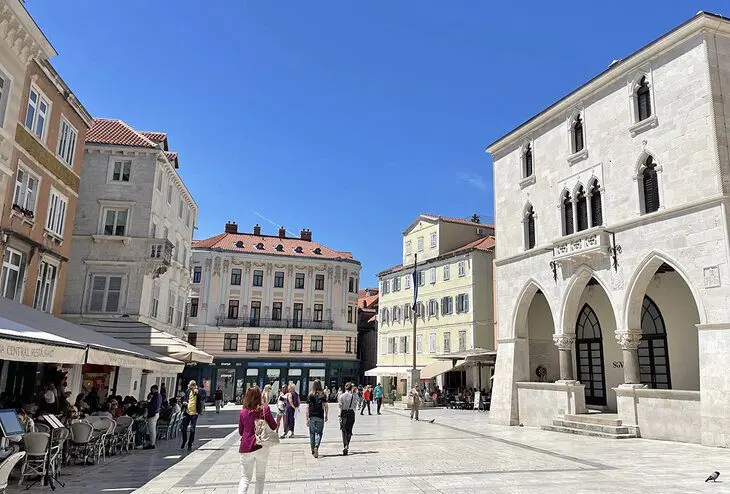
About 230 kilometers from Dubrovnik, the vibrant city of Split is a long day trip, but it’s worth it. This is one of the top places to visit in Croatia.
In a gorgeous setting between the mountains and the sea, Split is Croatia’s second-largest city after Zagreb. While Dubrovnik feels very much like a giant outdoor museum, Split is slightly different in that it is actually a massive modern-day city in addition to a center for history and architecture.
Old Town centers around the magnificent 1,700-year-old Diocletian’s Palace. The palace was commissioned by its namesake Roman Emperor between the late 3rd and early 4th centuries AD and was recently used as a location for the popular series Game of Thrones.
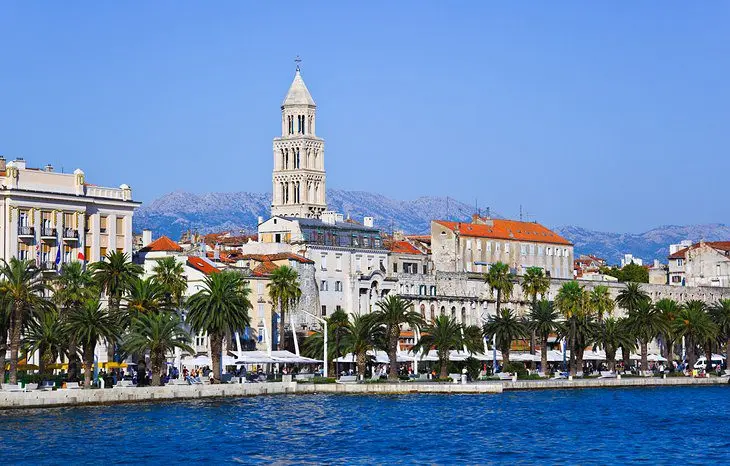
Today, shops, galleries, apartments, and restaurants reside within its ancient walls, creating a kind of living museum, and it’s interesting to see daily life revolving around this historic Roman monument. Highlights of Split’s pedestrian-only UNESCO World Heritage-listed old town include the Peristyle, the Palace’s central square; the Cathedral of St. Domnius; the Temple of Jupiter; and the impressive palace gates.
Other top attractions in Split include the Ivan Meštrović Gallery and the beautiful Marjan Forest Park and Marjan Stairway, with hiking trails and spectacular views of the city and sea. Strolling along the seafront promenade, the Riva, is a popular local pastime, especially in the early evenings. In fact, the beaches around Split are extremely popular places for locals and tourists to kick back during the summer season.
Split is also a launching point for trips to Dalmatian summer resorts such as the Pakleni Islands, Zlatni Rat, Brela, Solta, and Milna, and these are also some of the most popular day trips from Split.









